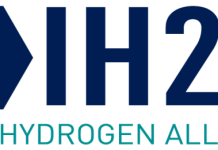Abstract
To feel or experience from a business engagement started with customer experience mainly in the consumer products business. Today it has extended to even knowledge industries like the chemical industry where experiencing or feeling can be leveraged to include all stake holders from customers primarily to employees to supply chain people & suppliers and all else. With digital technologies this has become easier than before. The benefits from promoting the ‘feel’ or ‘experience’ emotion could be multifarious for the chemical industry as described in this article.
Today, organizations thrive or fail based on the experiences they deliver. In a world of abundant choice, experiences differentiate brands and products, and foster customer and employee loyalty. Great experiences drive customer loyalty, upsell and expansion, employee engagement, brand quality, improved retention and referral, and ultimately, greater shareholder value. Conversely, unfavorable experiences lead to increased churn, lower productivity, diminished competitiveness, and value destruction. With the advent of digital communication channels, favorable or unfavorable experiences can be shared instantly and spread virally, amplifying these impacts and raising the stakes for organizations of all types and sizes. However, 80 percent of CEOs still believe they are delivering a superior experience, but only 8 percent of customers agree. This “experience gap” leads to failed product launches, delayed inventory shipments and high customer churn.
In this regard, the chemical industry is no exception, even though when talking about customer experience, people’s minds are more likely to spring towards direct consumer-oriented industries, like Retail, Wholesale or Consumer Products. However, with chemical companies also starting to adopt multi-channel approaches and with consumers pushing for sustainable products and formulations meeting the needs of “cradle to cradle” concepts and the Circular Economy, customer experience is more and more recognized as a growth engine. Some chemical companies even leverage open innovation platforms to crowdsource innovative ideas but, in most cases, they are focused on product and formulation characteristics, rather than on customer experiences along the buying and applying journey. To excel in customer experience, two elements need to be brought together – the “What” and the “Why.”
Let’s first talk about the “What.” Over decades chemical companies have stored myriads of data from day to day operations – be it in research and development, in manufacturing, in running and maintaining assets, in logistics and order fulfillment and in sales. However, all those data almost entirely relate to transactions – in other words: they tell you what has happened, but they don’t tell you why things happened.
Let’s investigate a few examples where “why” matters.
Sample Management
Many chemical companies, particularly specialty manufacturers, easily supply thousands of product or formulation samples per month to customers for testing. However, in many, if not in most cases suppliers do not receive any feedback on for example sample arrival on time and in good condition, performance in lab tests or conversion of sample orders into commercial orders. Sometimes customers may not even know that a chemical company manufactures innovative products accompanied by samples for lab testing. Implementing a truly end to end Lead to Cash Process around sample management with full insights into all “X+O” touchpoints would help chemical customers to:
- Bundle the right products and provide individualized solutions
- Review delivery execution model
- Utilize customer feedback before launch to increase market success of newly introduced products
From a business perspective this would ultimately result in accelerated sales growth, higher customer satisfaction, increased customer retention and increased forecast accuracy.
Attracting and Retaining the Best Talent
The chemical industry, as many other asset intensive industries, is suffering from the issue of aging workforce. Human Resources managers recognize that a significant percentage of their workforce is nearing retirement, and they are not attracting and retaining enough young talent to replace the retiring employees. Diagnosing the root cause is typically a complex, manual process that requires significant time and effort. Bringing in the “why” factor from capturing “in the moment” feedback from current and prospective employees and combining the “what” and the “why” provides the necessary insights for launching dedicated programs in support of:
- Career planning and development opportunities to attract and retain crucial talent
- Focus on collaborative and engaging workforce environment to promote employee referrals
- Develop mentoring and training programs to upskill new hires
- Optimize HR processes to reduce hiring cycle time
- Audit training to ensure quality training sessions
As a business result, chemical companies will reduce employee turnover, they will be able to attract highly skilled new talent and increase employee engagement.
Digital Commerce Management
Today, Digital Commerce Managers leverage operational metrics to manage their business. However, metrics like high customer churn rates, long lead times for order fulfillment or e-commerce sales below forecasts suggest that there is a problem, but root causes are mostly not known and drilling down into them would require significant time and effort. Being able to capture and analyze “in the moment” customer feedback to better understand emotions and sentiments around the digital experience could deliver the necessary real-time insights on key experience drivers influencing commerce platform success. In response, new initiatives and programs could be launched, for example:
- Provide customer self-service access to product documentation including Safety and Technical Data Sheets
- Use ATP and transportation planning to improve ability to commit to delivery dates
- Improve web store user interface and content to increase order volume through web channel
- Use analytics to predict and prevent customer defection
At the end, companies will be rewarded with sales growth and increased customer retention.
Improving Supplier Collaboration
In general, chemical companies have more difficulty getting good service from truck carriers than other industries. Reasons are:
- Many products are Hazmat’s that can be transported only by specific carriers
- Loading bulk products is complicated and time consuming
- Specialized loading and unloading gates/hatches are often required
Low tender acceptance is the consequence and truck availability could become a critical bottleneck at specific plants along with typical operational KPIs falling behind compared to benchmarks, like poor on-time delivery, high total costs of transportation, increasing times for order fulfillment, increasing dwell time charges or high number of Logistics FTE.
Better understanding of the issues from the carrier’s point (the “why”) chemical companies can put in place a set of remedies for improvement, such as:
- Collaborate with carriers by sharing shipment forecasts
- Implement site logistics procedures to schedule and optimize loading
- Implement appointment scheduling with real time alerting about site delays
- Improve processes around generation of shipment documentation
- Improve tendering process by including more detailed product information equipment requirements
Finally, those initiatives would result in improved supplier relationships and increased customer satisfaction.
These are just a few examples how understanding customer or supplier sentiments (the “why”) in the chemical industry and embedding those into critical business processes from an end to end perspective can deliver tangible value and drive new business outcome-oriented business models. Leading chemical companies already embed customer sentiment and satisfaction analysis into their entire quality and complaint processes. To achieve breakthrough results, businesses need to move beyond systems of record to new systems of action, specifically designed to intelligently use both Experience, and Operations-data to manage and improve the four core experiences of business – customer, employee, product, and brand.
A recent study from Accenture came to a similar conclusion calling out the synergies between the “O data” minded left brain thinking C-Suite and a group of “X data” minded right brain thinking employees, called “pathfinders” working together and closing the earlier mentioned experience gap. Pathfinders act primarily based on their motivations and perception of self-empowerment when dealing with the companies they work for and buy from. According to Accenture, companies adopting such a whole-brain approach see a positive bottom-line impact and realize on average 22 percent higher revenue growth and 34 percent higher profitability growth.
For more such interesting Articles/opinion pieces, read Chemical Industry Digest regularly. To subscribe Click Here
To feature your company’s profile/ Submit articles, in print or online, write to us at chemindigest@gmail.com
































